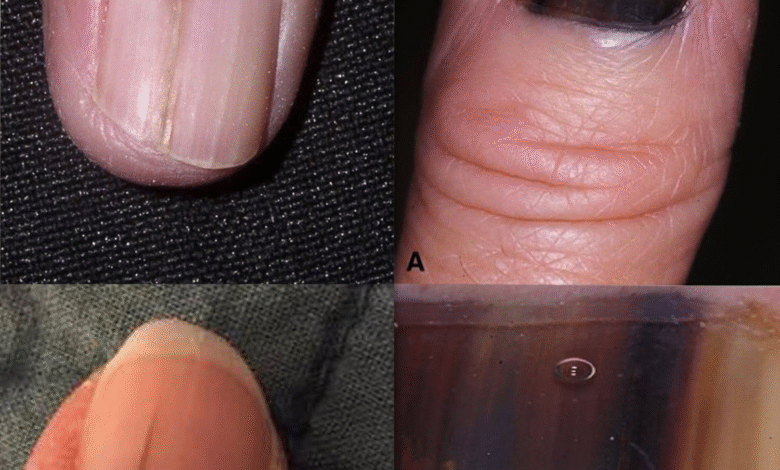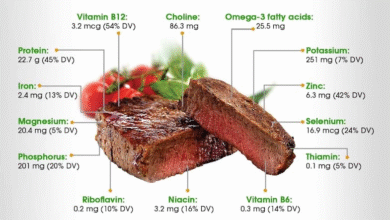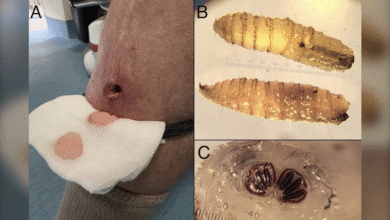Subungual Melanoma: How a TikTok Video Saved a Life

Subungual melanoma is an uncommon yet serious form of skin cancer that develops beneath the nail, often going unnoticed until it becomes advanced. This type of nail cancer can manifest as dark streaks or spots under the nail, making early melanoma signs critical for timely diagnosis and treatment. Many are unaware that nail discoloration can be linked to melanoma; therefore, skin cancer awareness is essential for early detection. In recent times, social media platforms like TikTok have become valuable resources, with dermatologists sharing insights and advice that can lead to awareness and prompt action against potential cancer diagnoses. If you notice sudden changes in your nails, consulting a healthcare professional is crucial, as early intervention can significantly improve survival rates.
Nail melanoma, also referred to as subungual melanoma, poses unique challenges due to its subtle presentation beneath the nail bed, often leading to late diagnoses. This type of skin malignancy is not only rare but can sometimes resemble harmless issues, such as a fungal infection or a simple bruise. Recognizing the symptoms early is key in preventing progression and ensuring effective treatment. With the rise of educational platforms like TikTok, many individuals are becoming more informed about the signs to watch for, contributing to increased skin cancer awareness. As people share their personal journeys and the importance of seeking medical opinions when noticing unusual nail changes, the conversation around nail health and cancer risks continues to grow.
Understanding Subungual Melanoma: A Rare Nail Cancer
Subungual melanoma is a rare but dangerous type of skin cancer that forms under the nails, primarily affecting both toenails and fingernails. This aggressive form of cancer typically presents as a dark streak or discolored area underneath the nail, which is often mistaken for other harmless conditions like nail fungus or bruising. Because it is relatively rare, constituting only 0.7% to 3.5% of all melanoma cases globally, many individuals are unaware of its existence until symptoms become more severe. In the case of Lauren Koltcz, her journey highlights the importance of recognizing unusual nail changes, as early detection can lead to significantly better outcomes regarding survival rates and treatment success.
Early signs of subungual melanoma, such as brown streaks or changes in nail texture, might easily be overlooked. Individuals often dismiss these symptoms as benign issues, attributing them to bruising, vitamin deficiencies, or fungal infections. However, as exemplified by Koltcz’s story, when these symptoms persist or worsen, it’s critical to seek professional medical advice. Dermatologists emphasize that monitoring changes and being proactive can lead to early cancer diagnosis, significantly improving the chances of successful treatment. Along with proper education and awareness, increased visibility on platforms like TikTok can empower individuals to recognize early melanoma signs and encourage timely medical consultations.
The Role of Social Media in Raising Skin Cancer Awareness
Social media platforms, particularly TikTok, have become pivotal in spreading awareness about various health issues, including skin cancer. Many dermatologists are utilizing the platform to share valuable insights, educating the public on recognizing warning signs of skin conditions such as melanoma. Videos showcasing personal stories and clinical advice can motivate viewers to pay closer attention to their health, as evidenced by Lauren Koltcz’s experience after she came across a dermatologist’s TikTok. This digital approach not only entertains but also informs and empowers individuals to investigate potential health concerns, often prompting them to seek medical help sooner.
By harnessing the power of social media, healthcare professionals can create a more informed public regarding conditions like nail cancer, while also addressing myths and misconceptions related to skin health. TikTok has proven to be particularly effective because its engaging format resonates with younger audiences who may be most at risk due to a lack of awareness. This shift towards digital health education plays a crucial role in promoting skin cancer awareness, reinforcing the urgency for everyone to remain vigilant about changes in their skin and nails, and to advocate for routine dermatological check-ups.
Key Early Signs of Melanoma to Monitor
Identifying early signs of melanoma is crucial for effective treatment and can significantly improve survival rates. Some of the primary indicators include any new or unusual growths, changes in the appearance of existing moles, and, as seen in Koltcz’s case, dark streaks or discoloration under the nails. These signs may often be mistaken for non-threatening issues, such as nail injuries or fungal infections. Regular self-examination of the skin and nails should be a habit for everyone, as this can lead to early detection and intervention—a key aspect in successfully managing skin cancer.
Dermatologists recommend being aware of the ABCDE rule as a guideline for identifying potential melanoma: Asymmetry, Border irregularity, Color variation, Diameter larger than 6 mm, and Evolving or changing in appearance over time. Even though the ABCDE rule is commonly applied to moles, it can also be relevant when assessing changes in nails. Individuals should seek out a healthcare professional if they notice concerning indicators, as timely cancer diagnosis can greatly affect treatment options and outcomes.
The Importance of Regular Check-Ups with a Dermatologist
Routine visits to a dermatologist are vital for anyone concerned about skin health, especially for individuals with a family history of skin cancer or any noticeable changes in their skin or nails. Dermatologists play a crucial role in educating patients about various conditions, including nail cancer, guiding them on what to look for during self-examinations. Regular check-ups enhance the chances of early detection of any potential problems, such as subungual melanoma, which can sometimes go unnoticed until more serious symptoms develop.
During these visits, a dermatologist may perform a full skin examination, allowing for the identification of suspicious moles or discoloration on the nails that may otherwise be overlooked by individuals. If a concerning finding is noted, the dermatologist can recommend further testing, such as biopsies. The proactive approach afforded by regular dermatological check-ups is essential in managing skin cancer risks and fostering greater awareness of conditions like nail cancer, ultimately contributing to increased survival rates for affected individuals.
Addressing Myths About Nail Melanomas
Nail melanomas often come with a cloud of myths and misconceptions that can lead to delayed diagnoses. One prevalent myth is that nail changes, such as dark streaks, are always the result of trauma or fungal infections, preventing individuals from seeking medical advice. This misconception hampers early detection efforts, as many believe they are merely experiencing a harmless issue related to their nails. The truth is, changes in nail color or texture can signify more serious conditions, including subungual melanoma, and should never be ignored.
Educating oneself and the community about the symptoms and risks associated with any form of skin cancer is crucial. For instance, many people may not realize that nail melanomas can occur without any noticeable discoloration, making it vital to emphasize the importance of monitoring all changes in the nails. Health professionals are beginning to combat these myths actively through information campaigns and social media platforms, striving to inform the public that vigilance regarding nail health is essential for early melanoma signs and ultimately life-saving.
Survival Rates for Early Detected Subungual Melanoma
Survival rates for subungual melanoma are significantly higher when the disease is detected at an early stage. As highlighted by Dr. Alison Vidimos, timely intervention can lead to survival rates exceeding 95%. This stark contrast with late diagnoses—which can lead to the cancer spreading to lymph nodes and complicating treatment—emphasizes the absolute necessity for awareness and early medical consultation. Therefore, individuals who notice any unusual changes in their nails should not hesitate to seek professional evaluation.
It is crucial to recognize that while subungual melanoma is rare, it carries serious health implications if left unchecked. The statistics underline the importance of regular check-ups and self-examinations. By paying attention to nail health and acting promptly when changes occur, individuals can significantly influence their outcomes and increase their chances of a positive prognosis. Thus, incorporating familiarization with early melanoma signs into skincare routines emphasizes not only personal health awareness but also potentially life-saving actions.
The Role of Healthcare Providers in Cancer Detection
Healthcare providers, particularly dermatologists, play a vital role in the early detection and effective management of skin cancers, including rare forms like subungual melanoma. They are equipped to recognize subtle signs that may indicate more significant problems and can provide much-needed reassurance and guidance. The expertise of healthcare professionals in diagnosing skin conditions is paramount, especially for mismatched cases where individuals might misattribute symptoms to benign issues.
Educational initiatives led by dermatologist communities aim to empower patients to recognize the signs of skin cancer. By emphasizing the importance of visual inspections and addressing common misbeliefs about nail health, they help nurture a culture of awareness and proactive healthcare. Ensuring that patients are informed about when to seek help can drastically enhance early detection rates, reinforcing the essential duty of healthcare providers in advocating for skin cancer awareness and patient education.
Living Life After a Melanoma Diagnosis
Receiving a melanoma diagnosis can be a life-altering experience for patients and their families. Initially, there may be fear and uncertainty about the future, but early detection significantly changes the narrative, often leading to successful treatments. Individuals like Lauren Koltcz, who caught her subungual melanoma at stage 0, can share inspiring stories of resilience and hope. Their experiences resonate with the reality that while cancer is a serious condition, the advancements in treatment options and the potential for favorable outcomes can provide much-needed optimism.
Post-diagnosis, regular follow-ups with healthcare providers are critical. These follow-ups allow for ongoing monitoring and ensure that any potential recurrence can be managed promptly. Individuals are often encouraged to adopt healthier lifestyles and remain vigilant about their skin health, emphasizing the long-term commitment required to stay cancer-free. Additionally, sharing experiences in community forums contributes to a broader understanding of living with and overcoming cancer, thus fostering a supportive environment for others who may be on a similar journey.
Empowering Others Through Shared Experiences
Sharing personal experiences of navigating a melanoma diagnosis can have profound effects on others who may face similar challenges. Individuals like Lauren Koltcz are transforming their experiences into powerful narratives that highlight the importance of awareness, early detection, and seeking medical help. By educating others about their symptoms and the critical steps they took toward diagnosis, they empower others to be vigilant about their own skin health.
Such dialogues can escalate into community initiatives focused on skin cancer awareness, encouraging others to participate in regular check-ups and monitor their skin and nail health. Utilizing platforms like TikTok or community forums creates a ripple effect, where knowledge gained from personal battles against cancer can inspire others to take their symptoms seriously. Ultimately, this empowerment process contributes significantly to diminishing the stigma surrounding cancer diagnoses and promoting a culture of vigilance and support.
Frequently Asked Questions
What are the early signs of subungual melanoma?
The early signs of subungual melanoma include the appearance of brown lines or streaks under the nail, which can change in color or thickness over time. It’s important to monitor any unusual nail discolorations or changes, as early detection can lead to a higher survival rate.
Why is subungual melanoma often mistaken for nail infections?
Subungual melanoma can often be mistaken for nail infections or other benign conditions due to its initial presentation, such as dark lines or spots under the nail. Many individuals may apply antifungal treatments, unaware that they are dealing with a potentially serious type of skin cancer. Consulting a dermatologist is crucial for accurate diagnosis.
How does subungual melanoma compare to other forms of skin cancer?
Subungual melanoma is a rare type of skin cancer, comprising only 0.7% to 3.5% of all melanomas worldwide. Unlike more common forms of skin cancer that may exhibit more visible symptoms on the skin, subungual melanoma often develops under the nail, making it easy to overlook until it progresses.
What role can TikTok play in raising awareness about skin cancer, particularly subungual melanoma?
TikTok can be a powerful platform for raising awareness about skin cancer, including subungual melanoma. Through videos by dermatologists, viewers can learn about early melanoma signs and be encouraged to seek medical attention for unusual changes in their nails, promoting early cancer diagnosis.
What treatment options are available for someone diagnosed with subungual melanoma?
Treatment for subungual melanoma typically involves surgical removal of the cancerous tissue, along with a margin of healthy skin to ensure complete excision. If detected early, the prognosis is excellent, with over a 95% survival rate. Regular follow-ups with a dermatologist are essential after treatment.
How can someone monitor for signs of nail cancer like subungual melanoma?
To monitor for signs of nail cancer such as subungual melanoma, regularly check your nails for any new or changing dark spots or lines, particularly if they are wider than 3 millimeters. Documenting changes and promptly consulting a dermatologist can help detect any issues early.
Are there specific risk factors associated with subungual melanoma?
Yes, risk factors for subungual melanoma can include a personal or family history of skin cancer, particularly melanoma, and certain skin types that are more susceptible to UV damage. It’s important for individuals with these risk factors to be vigilant about monitoring their nails.
| Key Point | Details |
|---|---|
| Diagnosis via TikTok | A mother’s cancer diagnosis was prompted by TikTok videos that urged viewers to monitor nail changes. |
| Initial Symptoms | Lauren Koltcz noticed a brown line on her thumb, initially attributing it to a vitamin deficiency. |
| Medical Consultation | Despite topical antifungal treatment, her condition worsened, leading to further consultation with a doctor. |
| Important Findings | The pigmentation was dark, with various shades, and wider than 3mm, raising concerns. |
| Biopsy Results | The biopsy confirmed subungual melanoma, which is a rare but serious type of skin cancer. |
| Cancer Stage | It was detected at stage 0, meaning it was confined to the top layer of the skin. |
| Survival Rate | When caught early, this cancer has over a 95% survival rate, making vigilance crucial. |
| Follow-Up Care | Lauren will have regular follow-ups to monitor her health after surgery to remove the cancer. |
Summary
Subungual melanoma is a serious form of skin cancer that develops under the nail. The story of Lauren Koltcz highlights the importance of being vigilant about nail health, as what may seem like a benign issue can signify a more serious condition. Through early diagnosis prompted by awareness shared on social media, her condition was identified at a stage where treatment could lead to a high chance of survival. Regular monitoring and a proactive approach to unusual nail changes can play a vital role in preventing late-stage diagnoses of subungual melanoma.




